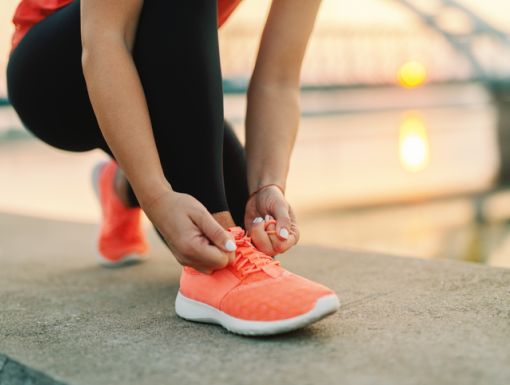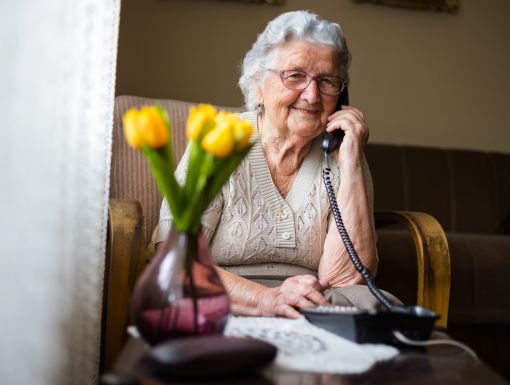
Subtle Life Changes to Support Social Distancing
Over the past few weeks, Americans have transitioned from an initial period of shock following the coronavirus (COVID-19) outbreak into learning to live with the presence of the virus in their communities. Working to flatten the coronavirus curve has demanded that families self-isolate in their homes and use social distancing tactics when in public. By limiting where and when people come together, social distancing helps to curb disease transmission, especially if coronavirus carriers are asymptomatic or have yet to develop symptoms indicating they have the virus.
To practice social distancing, people must keep a minimum of 6 feet of distance between themselves and other people who are not members of their immediate household. COVID-19 can be spread by droplets in the air, which are released when people sneeze or cough. The CDC is currently recommending the use of a cloth face covering in public settings where other social distancing measures are difficult to maintain, like pharmacies and supermarkets. However, a cloth mask is not a substitute for proper social distancing.
Below are a few gentle suggestions for small ways to adjust your daily routine and public behavior to accommodate others as we work together to slow the spread of COVID-19.
In Your Neighborhood
Exercise mindfulness when you are outside of your home. Distracted behavior like looking at your cell phone while walking down a sidewalk can put you in closer proximity to others than you may realize. Try to keep your phone in your pocket or purse – the less you touch it, the better!
If you are out exercising and wearing headphones, it may be hard to hear people who are approaching or who you are approaching. Be vigilant of your relationship with others who may be occupying your space at certain times of the day like dog walkers and families with strollers. Also, make sure to look both ways while crossing streets and try not to take corners too narrowly.
If you are out with other members of your family or household, be mindful of the space that your collective group is occupying on a street or sidewalk or at the park. These are moments that may seem relaxing or carefree for groups that are familiar with one another, but it can be intimidating to individuals who may need to pass or move around you. Make an effort to show that you are conscious of others by forming a single file when they are passing and giving others an extra foot or two of space to move around you safely in confined areas like grocery stores. Eye contact can also help communicate that you see them and are aware of their presence.
It’s OK to be friendly, and compassionate! Your neighbors are going through the same situation that you are, and a smile and wave from afar can go a long way toward easing the tension and anxiety that we are all feeling right now. One of the silver linings of this difficult time is the sense of community and solidarity many of us feel with our neighbors.
At the Store
Keep a running tally (written list or phone) of what you are running low on in your home and organize your shopping list to collect the maximum amount of groceries per trip.
Research ingredient swaps ahead of time for items that run low, so you’ll be prepared in case the store is out of something that is required in a recipe.
Use touchless payment methods when possible and make an effort to touch as few things in the store as possible.
If it’s possible with your schedule, stagger the times you leave the house to avoid peak shopping hours. Be conscientious of special shopping hours for healthcare workers or seniors to avoid visiting the store during times that are dedicated to them.
Don’t be afraid to experiment in the kitchen. Modern cooks are used to being able to shop for the specific ingredients called for in a recipe. Prepare to be flexible as your ingredients may be sold out or may require multiple trips to different stores.
With Friends and Family
There are lots of special moments that we are used to cherishing with our loved ones: birthdays, anniversaries, graduations, and more. Unfortunately, it is up to each of us to celebrate these occasions safely and responsibly and to set ground rules with our extended friends and family that will prevent anyone from becoming sick. This may mean gently, but firmly, declining invitations to “just stop by” or setting clear boundaries with loved ones until after social distancing measures are lifted.
That doesn’t mean you can’t celebrate birthdays, graduations and more, though! Here are tips on safe ways to celebrate birthdays and graduations during quarantine, from experts at Ochsner.
Social distancing places most of the responsibility on the individual. In order for it to be effective, each person must respect the guidelines and do their part even when it’s painful or inconvenient. It’s important to remember we all share the same goals: to keep our families, friends, and communities safe and give our healthcare workers the best possible chance to save as many lives as possible.
The information in this blog post is accurate at the time of publication. However, as the situation surrounding COVID-19 continues to change, it's possible that information has changed since being published. While Ochsner Health is trying to keep our blog posts as up-to-date as possible, we also encourage readers to stay informed on news and recommendations by using the CDC website.
For the latest updates from Ochsner on COVID-19, visit Ochsner.org/coronavirus



